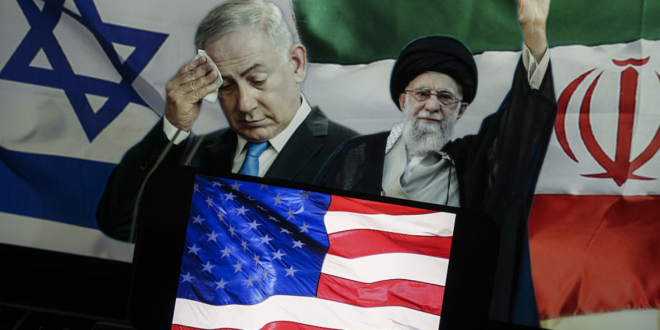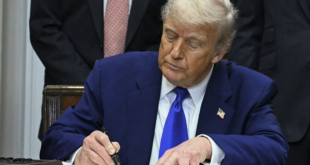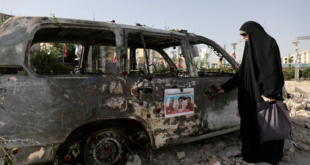In the aftermath of US & Israeli strikes, Iran is at a crossroads. As well as a weakened ‘Axis of resistance’ the regime faces many internal challenges.
The Iranian regime recently faced a critical reckoning. For 12 days, it operated in survival mode amid escalating conflict with Israel and, by extension, the United States. Now, Tehran and its network of proxies—from the Levant to the Gulf of Aden—must reassess their strategies in the face of Israel’s relentless military campaign following the October 7, 2023, attacks by Hamas and other Palestinian militant factions.
The months ahead will present an uphill battle for Iran. The regime must assess the extent of damage caused by Israeli and US strikes, particularly to its nuclear infrastructure, and recalibrate its nuclear policy and negotiations with Washington. Internally, Tehran is also grappling with the aftermath of targeted assassinations that claimed the lives of key military leaders—figures instrumental in linking Iran to its “Axis of Resistance” network.
This axis, comprised of Iranian-backed militant groups across the region, has been repeatedly weakened by Israeli assassinations over the past two decades—some coordinated or executed in tandem with US intelligence.
These include the 2008 killing of Hezbollah commander Imad Mughniyeh in Syria through a CIA-Mossad operation, and the 2020 US drone strike that eliminated Qassem Soleimani, the architect of Iran’s regional military influence.
More recently, figures such as Hezbollah Secretary General Hassan Nasrallah and Hamas commander Yahya al-Sinwar have also been targeted, shaking the foundation of Iran’s regional strategy.
Meanwhile, US sanctions since 2019 have further constrained the regime’s ability to arm and fund these proxies via the Quds Force.
With the latest confrontation now paused by a ceasefire, the “Axis of Resistance” enters a transitional phase. While various fronts against Israel are often interlinked, only once – immediately following the October 7 attacks—were they activated in concert, with deadly consequences on their operations.
Hezbollah, for instance, has sustained significant losses in leadership, infrastructure, and weaponry, forcing it into a defensive posture aimed at holding positions north of the Litani River and avoiding escalation under continued Israeli pressure.
In Gaza, despite being under siege, Hamas has suffered devastating blows. After the assassinations of Yahya al-Sinwar in October and Mohammed al-Sinwar in May, leadership has passed to Izz al-Din al-Haddad, who now must navigate ceasefire talks with Israel amid diminished operational capacity.
Although Hamas has not been eliminated, its ability to launch rocket attacks and conduct high-impact operations has been severely reduced.
The Lebanese and Gaza fronts remain largely dormant and compromised, and Syria is no longer a viable launchpad for Iran’s strategic ambitions. This leaves Iraq and Yemen as the most active—and potentially dangerous proxies.
The Iraqi front remains sensitive. Iran-aligned armed groups in Iraq face limitations in striking Israel due to technical, logistical, and geographic constraints. Their primary activities have focused on US forces stationed in Iraq and Syria. However, provoking the United States risks destabilising Iraq – a shared concern for both Washington and Tehran. Despite having ample proxy forces in Iraq, Tehran appears hesitant to deploy them, preserving this option as a last resort.
Yemen, by contrast, offers a more resilient staging ground. The Houthis, entrenched in the rugged mountains of northern Yemen, have demonstrated an ability to continue resistance and adapt under pressure, despite limited resources. Of the active fronts, Yemen now poses the most sustained challenge.
However, Iran’s greatest challenges may be internal.
The Iranian regime is contending with a need for reconstruction, nuclear policy recalibration, and efforts to break free from diplomatic and economic isolation. For the first time, Iranian citizens have experienced the fear of urban warfare at home – a stark shift from the regime’s long-standing pattern of waging conflicts abroad. This may sow domestic unease and raise doubts about the regime’s ability to protect both its people and its nuclear assets.
Key questions remain unanswered. Will Iran double down on its nuclear ambitions, or choose diplomacy to preserve its long-term survival? Will Tehran concede that recent strikes crippled its program, aligning with US claims, or push a defiant narrative that its capabilities remain intact? With Washington’s “maximum pressure” campaign having subsided and a diplomatic window now open, Tehran faces a crucial crossroads.
The Iranian government has signalled a shift toward secrecy regarding its nuclear activities. Parliament has approved a bill to suspend cooperation with the International Atomic Energy Agency (IAEA) unless the security of Iran’s nuclear sites is guaranteed, stipulating that any future inspections would require approval from Iran’s Supreme National Security Council. Meanwhile, Parliament Speaker Mohammad Baqer Qalibaf has announced plans to accelerate the country’s civilian nuclear program.
Ultimately, Tehran must make difficult decisions. Should it prioritise preserving its proxies, advancing its nuclear program, or ending economic isolation? With limited resources, it is unlikely Iran can pursue all three objectives simultaneously. As the region transitions into a post-ceasefire phase, the Iranian leadership faces some of the most consequential choices in its recent history.
 Eurasia Press & News
Eurasia Press & News


